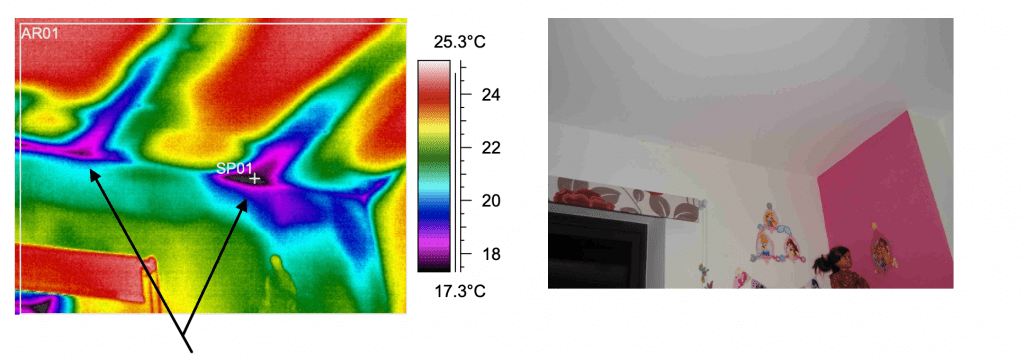Following on from our blog on the New Homes Ombudsman, Paul Surin [1], IBM’s Global Lead on the Built Environment and BIM, shared his experience of very poor quality new build. He thought he was moving into a highly energy efficient performing home, but after moving in the reality was very different. Here’s what he said:
‘’We bought the property in February 2012. The house was expected to be a high standard home, built at an EPC B rating, including 6m2 of solar thermal panels. Unfortunately, the reality was different.
From day 1, we had a lot of problems. While the agent was handing over our new dream house, I discovered there was no water in the heating system, the solar thermal cylinder was empty, there were missing door handles, there was no grass, and other incomplete work on the house surroundings. It was a nightmare. It had taken over 3 months for developer to complete the basic work on the home. Whilst they were doing this, they found more issues and had to replace the solar pump system as there was no solar fluid and the pump burnt out.
Over time, we discovered our energy bills were nowhere near the suggested EPC figures. I am aware the EPC figures are not accurate but still, we did not expect to have £1,200/year energy bills for such a modern house.
I started digging into the specification, insulation standards and construction details of the house. It was very clear that there were more issues. In the attic roof space, the insulation was poorly applied and even discovered packed rolls being left in there. There was no insulation between the rafters, in the cavity, behind the electric cupboard.

Thermal imaging of heat loss via bedroom ceiling
I had been arguing with the developer for over 3.5 years until they finally accepted the liability. I eventually reported them to NHBC, although it took a while for them to accept my claim. Despite the setbacks, I was determined to win this battle. I had a thermal survey done, involved our local councillor and appealed the NHBC decision. Finally, by the end of 2015, the NHBC had accepted my claim and forced the developer to rectify the issues. The rectification work itself had taken several months to complete and I had to do all the inspection work on my own.
Throughout this rectification work, more issues arose. The 300 litre cylinders fitted in the first-floor airing cupboard were not effectively supported. The stainless steel cylinder was resting on two small timbers and a plywood. The plywood was already cracked so it was only a matter of the time before the cylinder could have dropped through our ceiling- which had been an issue in our neighbours’ homes. Our front door had started cracking and, after about a year, we were unable to lock or even close the door. The developer needed to realign, fill in cracks and repaint the door. This took longer than expected.
So, 5 years after purchasing the property, I finally had the house I expected back in 2012. I did end up receiving compensation from the developer for the excess in energy bills costs. Right now, the property costs us around £500-600/year to run.‘’
The New Homes Ombudsman hopes to make rectifying issues with new builds easier. Support will be given to homeowners so that those responsible for poor work will be held accountable and the process is easier. See our New Homes Ombudsman Blog for more information.
If you want to satisfy yourself that the homes you build meet environmental specifications, please take a look at our Post-Occupancy Evaluation services.
[1] Paul Surin has extensive knowledge of digital transformation strategies, BIM, Construction, Manufacturing, design & advice, modern methods of constructions, manufacturing processes, renewable energy technologies & energy performance of existing and new dwellings as well as planning regulations.
He is a chartered member and engineer of both the Institute of Engineering and Technology and the Chartered institute of Building. He has degrees in Energy and Sustainable Development, Engineering in Mechanical, Robotics, IT and Architecture, along with further qualifications including a postgraduate diploma in Eco-Building Design.
He is a member of Built Environment Executive at the IET, vice-chair of BIM4HOUSING, co-opted UK expert at European Standardization Working Group for BIM – CEN TC 442 and ISO. He is a chairman of Construction Product Europe Digitalization Task Group where he is involved in strategies around Digital Built Environment and what it means for manufacturers, digital construction and BIM.
